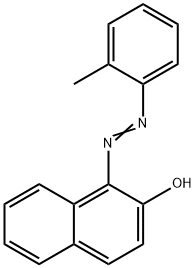SOLVENT ORANGE 60
- CAS NO.:61969-47-9
- Empirical Formula: C18H10N2O
- Molecular Weight: 270.2848
- MDL number: MFCD00280860
- EINECS: 230-049-5
- SAFETY DATA SHEET (SDS)
- Update Date: 2023-05-09 09:30:47

What is SOLVENT ORANGE 60?
Chemical properties
yellow orange. Orange powder. Insoluble in water, slightly soluble in ethanol, Chloroform, benzene, toluene, xylene and organic solvent. 
The Uses of SOLVENT ORANGE 60
Solvent Orange (SO) 60 is a perinone-type dye that is often used in plastic materials such as spectacle frames and has been shown to cause contact allergy. Mainly used for polystyrene, ABS resin coloring.
Preparation
A preparation method for solvent orange 60, belonging to chemical industry field, manufactured by: mixing phthalic anhydride and 1, 8- naphthylenediamine with the mass ratio of 1:1 with 1-5% by mass of hydrochloric acid solution, polar organic solvent miscible with water and non-ionic active catalyst, stirring and heating to the refluxing state for reacting 8-15 hours, filtering, washing the filter cake with water till the pH value of the filtrate is neutral, drying to obtain the solvent orange 60, wherein the dosage of the hydrochloric acid solution is 10-20 times of the 1, 8- naphthylenediamine; the dosage of the polar organic solvent is 1-50% of the total amount of the reaction medium and the dosage of the catalyst is 0.01-2% of the total amount of the reaction medium. The method combines the advantages of good quality and low cost of water phase method.
Safety information for SOLVENT ORANGE 60
New Products
(S)-3-Aminobutanenitrile hydrochloride 4-Methylphenylacetic acid N-Boc-D-alaninol N-BOC-D/L-ALANINOL Tert-butyl bis(2-chloroethyl)carbamate 3-Morpholino-1-(4-nitrophenyl)-5,6-dihydropyridin- 2(1H)-one Furan-2,5-Dicarboxylic Acid Tropic acid 1-Bromo-3,5-Di-Tert-Butylbenzene S-2-CHLORO PROPIONIC ACID ETHYL ISOCYANOACETATE 2-Bromo-1,3-Bis(Dimethylamino)Trimethinium Hexafluorophosphate 4-IODO BENZOIC ACID 3-NITRO-2-METHYL ANILINE 1-(2,4-DICHLOROPHENYL) ETHANAMINE (2-Hydroxyphenyl)acetonitrile 4-Bromopyrazole 2-(Cyanocyclohexyl)acetic acid 4-methoxy-3,5-dinitropyridine 1-(4-(aminomethyl)benzyl)urea hydrochloride 2-aminopropyl benzoate hydrochloride diethyl 2-(2-((tertbutoxycarbonyl)amino) ethyl)malonate tert-butyl 4- (ureidomethyl)benzylcarbamate Ethyl-2-chloro((4-methoxyphenyl)hydrazono)acetateRelated products of tetrahydrofuran








You may like
-
 2033-24-1 98%View Details
2033-24-1 98%View Details
2033-24-1 -
 42831-50-5 5-METHYLISOXAZOLE-4-CARBOXYLIC ACID 98%View Details
42831-50-5 5-METHYLISOXAZOLE-4-CARBOXYLIC ACID 98%View Details
42831-50-5 -
 1975-50-4 98%View Details
1975-50-4 98%View Details
1975-50-4 -
 2-HYDROXY BENZYL ALCOHOL 98%View Details
2-HYDROXY BENZYL ALCOHOL 98%View Details
90-01-7 -
 2-Chloro-1,3-Bis(Dimethylamino)Trimethinium Hexafluorophosphate 221615-75-4 98%View Details
2-Chloro-1,3-Bis(Dimethylamino)Trimethinium Hexafluorophosphate 221615-75-4 98%View Details
221615-75-4 -
 61397-56-6 CIS BROMO BENZOATE 98%View Details
61397-56-6 CIS BROMO BENZOATE 98%View Details
61397-56-6 -
 14714-50-2 (2-Hydroxyphenyl)acetonitrile 98+View Details
14714-50-2 (2-Hydroxyphenyl)acetonitrile 98+View Details
14714-50-2 -
 118753-70-1 98+View Details
118753-70-1 98+View Details
118753-70-1